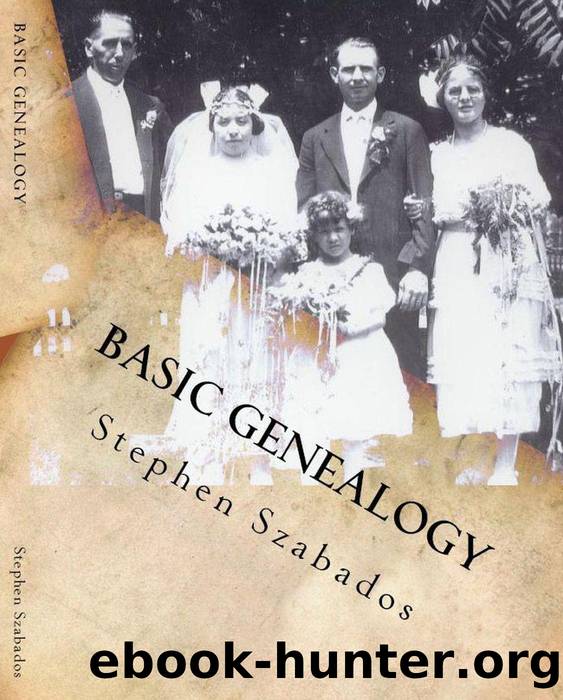Basic Genealogy by Stephen Szabados

Author:Stephen Szabados
Language: eng
Format: epub
Publisher: Stephen Szabados
Published: 2020-06-24T00:00:00+00:00
Summary of Military Records from Each War
Korean War
The Korean War began on June 25, 1950, and fighting ended with an armistice on July 27, 1953. The United States and other members of the United Nations came to the aid of South Korea and eventually fought both Chinese and North Korean forces. The armistice agreement that was signed restored the border between the Koreas near the 38th Parallel and created the Korean Demilitarized Zone (DMZ), a 2.5-mile (4.0 km) wide buffer zone between the two Koreas.
Ancestry.com has six databases that list military records for the Korean War. These include indexes that list U.S. prisoners of war, casualties, New York residents who were naturalized and Alabama soldiers who fought in the Korean War.
Note that two databases list prisoners and two that list casualties. Search all four databases for your ancestor because they may not overlap records completely. All four are indexes of extracted information and do not show the actual documents. The data for these databases came from original documents at the National Archives at College Park, College Park, Maryland and the Korean War Listing from the American Battle Monuments Commission.
The New York Naturalization Index lists extracted information for veterans from the New York Southern District who were naturalized in Korea while serving in the military. The naturalization petitions held by the NARA' Northeast Region Archives was the source for the information on the index cards. The Ancestry.com database provides only an image of the index card, and you will need to request a copy of the complete petition through the NARA website as discussed in chapter six.
Beginning in 1862, Congress passed a series of acts that were designed to encourage aliens to enlist in the military. The courts waived the required waiting period between the declaration and filing the petition if the alien served in the military and received an honorable discharge. This inducement was initially introduced to build the ranks of the Union Army during the Civil War but has continued to be used today to attract immigrants into military service.
The Staff members from the Alabama Department of Archives and History (ADAH) created the Korean War database for Alabama Soldiers. Staffers extracted details from various newspaper articles, brochures, reference correspondence, photocopies and typescripts of original documents to document the military service of persons from Alabama during the Korean War. The index cards can include details such as name, branch of the military served in, rank, residence/address, event dates (wounded, missing in action, rotation returnee, etc.), sources, source dates, and names of family members/next of kin. Cards may also include some military personnel who were not necessarily deployed to Korea.
World War II and World War I
Because many of the records for World War I and World War II army personnel were lost in the 1973 fire, I found the World War I and World War II draft registrations as the easiest military records to obtain for these wars. Note that index cards do not exist for many men who enlisted before
Download
This site does not store any files on its server. We only index and link to content provided by other sites. Please contact the content providers to delete copyright contents if any and email us, we'll remove relevant links or contents immediately.
Twilight of the Idols With the Antichrist and Ecce Homo by Friedrich Nietzsche(18457)
CHERUB: The Recruit by Robert Muchamore(2189)
CHERUB: The Fall by Robert Muchamore(2015)
I Capture the Castle by Dodie Smith(1943)
CHERUB: Man vs Beast by Robert Muchamore(1923)
The Edge of the Abyss (Sequel to The Abyss Surrounds Us)(1731)
Black Genesis by Robert Bauval(1561)
all by Unknown Author(1513)
A Brief History of Everyone Who Ever Lived by Adam Rutherford(1491)
Where Do I Start? by Chase Taylor Hackett(1247)
Spook Street (Slough House) by Mick Herron(1223)
2016 Baby Names Almanac(1184)
How to Argue With a Racist by Adam Rutherford(1163)
Painfully Rich by John Pearson(1145)
Genetics by Adam Rutherford(1134)
2011 Baby Names Almanac(1062)
Black Hawk Down by Mark Bowden(1058)
Life After Life: A Novel by Kate Atkinson(1048)
It's All Relative by A. J. Jacobs(1026)
